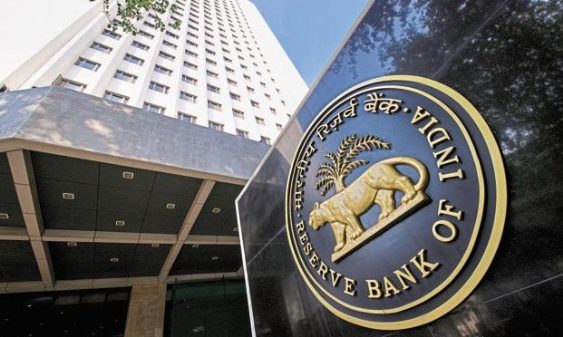For a government that has embraced fintechs and blockchain wholeheartedly in the past few years, its stance on crypto-currencies is perplexing. Is it a lack of understanding, or a lack of institutional capacity, that is preventing the government from stepping up and regulating crypto-currencies?
In January, the government announced that it plans to enter the global race of digital currencies or CBDCs while at the same time banning “private” crypto-currencies like Bitcoin and Ethereum among others. However, in the last few months it has indicated that it will give some room to crypto-entrepreneurs and blockchain founders to continue building, developing and running new and innovative systems. As far as crypto-investors are concerned, the government has said there will be some protections under the proposed law.
Despite the rude shock at the start of the Budget Session this year, the domestic crypto-universe has grown considerably. In fact, India’s place in the crypto-universe is stronger today than it was prior to the proposed crypto ban. Global crypto-exchange Coinbase recently announced plans to set up shop in India, while Tiger Global Capital, which has invested in several Indian startups in recent weeks, pumped $25 million into CoinSwitch Kuber at a valuation of $500 million. At the same time, domestic crypto-exchange WazirX and blockchain developer Polygon were recently listed on Coinbase and received considerable investor attention.
Despite the fact that domestic investors, startup founders and the government’s favourite tech-entrepreneur Nandan Nilekani are pretty much on the same page with respect to regulating crypto-currencies as investment assets, the government has provided very little information on the contours of the proposed crypto-bill. An outright ban on crypto investments and trading will create a black market, will reduce regulatory oversight and the government will lose out on tax revenue.
In the last year, crypto-currencies have become mainstream and it is time that the government abandon its weak arguments against crypto-currencies. When global capital is pouring in and Indians are gung-ho about investing in these instruments, the government needs to do the heavy lifting of framing new regulations.
1) Cryptos Are No Longer An Anarchist Dream
We are still living in the cycle perpetuated by the 2008 Global Financial Crisis. It has defined the global political landscape for the over the past decade, with numerous countries becoming politically polarised and poorer caused by mass unemployment, stagflation and a broken trust of what was thought to be the role of government. A sense of betrayal set in across countries.
While the United States government bailed out banks to the tune of nearly $2 trillion, India had its fair share of financial frauds and corruption with over Rs 10 lakh crore worth of unpaid debt sitting on the books of banks. It led to a fiscal crisis for years as well. Yet, in both of the largest democracies in the world government failed. No accountability, no justice.
It has taken considerable amounts of capital on the public’s expense, to ensure that the financial system both in the United States and in India stays afloat. As a result, we have got bigger global and domestic banks. Yet, the penetration of credit, savings, investments, insurance and pensions remains abysmally low for the size and number of financial institutions that India has. While fintechs have done a good job of growing the pot of consumer spending and credit in the last few years, it takes exorbitant amounts of capital to bridge the financial gap.
Central banks have also failed to enforce regulations effectively and have failed to monitor sketchy banking activity. The global financial crisis was not a sudden mistake, it was a ticking time bomb that has its roots as far as back in the 1980s. In India, neither the banks were careful, nor was the RBI capable of monitoring all that was taking place beneath the surface.
Can pooling our resources together lead to a more equitable distribution of money? Will removing banking and financial intermediaries, reduces the cost of providing a loan or underwriting an insurance policy? Will a decentralised peer-2-peer financial system be more stable than the current one we have? Cryptos, which potentially offer this possibility, were the anarchist dream to counter corrupt state power and rigged markets.
But with the likes of Mastercard, Visa, Paypal, Tesla and other major corporations accepting cryptos, in addition to Coinbase’ listing on the NASDAQ, this dream is dead. Crypto-currencies today are mainstream, regulated and corporatised to a large degree.
2) Cryptos do not threaten central banks
You would have read many articles or commentators saying that they are not currencies and that they do not follow the economic principles of money. This is, however, only half the story. Crypto-currencies fail only one of the classical principles of money: it is not a store of value since it is subject to the whims and fancies of markets. It, however, is a medium of exchange and a unit of account.
You would have also heard the argument that fiat currencies issued by a state or sovereign is the only legitimate form of money. But this is bereft of an understanding of economic history. The RBI has been around since 1934, when the British created it. Prior to that, we were subjected to the whims and fancies of the British Parliament, Bank of England and the British Monarchy. While the RBI is the only central bank India has ever had, both before and after independence, the United States’ Federal Reserve is not the first of its kind. There were at least two versions of a central bank, before the establishment of the Federal Reserve in 1907.
But let’s take a bigger step back. Money has always existed in many forms throughout human history. Initially, it was rocks, shells, gems and other commodities that were common between tribes and communities. Some communities never even had the concept of money, as they solely functioned for the benefit of their fellow tribesmen. Thereafter, once gold and silver became attractive commodities, communities began trading them and using it as a medium of exchange.
Metal currencies were eventually replaced by paper currency, initially on cloth or animal skin. When a person presented the paper or parchment it would represent a certain value of metal currency that the person owned. Historically, blacksmiths would take the gold and issue the paper currency to the owner. If the receipt holder presented the parchment to the blacksmith, the latter would provide the former with gold.
In a 100 year cycle, crypto-currencies represent the next form of money. People trust it, whether the government sanctions it or not. Nation states come and go, they take many forms and undergo structural changes all the time. People will always form different ‘social contracts’ on the basis of which human activity progresses. If people want to trade through Bitcoins, they will. It’s the same human principle in play here, as has been for thousands of years.
Most countries that regulate cryptos today have placed them under the jurisdiction of the markets’ regulator and not the central bank. Only those countries that have made Bitcoin an acceptable mode of payment, are regulating cryptos through their central bank. India should have no problem making that distinction.
The money we use today is a medium of exchange since it is issued by a sovereign authority, and a unit of account. Yet the price of the Rupee or the US Dollar is not stable. It is subject to exchange rates, the central banks’ intervention, gold reserves, bond markets, capital flows, government and private sector debt and other factors.
Crypto-currencies are also not stable, in fact their value fluctuates on a daily basis, which is why it can never replace fiat currency. However, when it comes to inflation cryptos work conversely. While fiat currencies depreciate in value due to inflation, crypto-currency holdings can appreciate in value over time. Hence, the widespread attraction among regular people.
Our central banks are going nowhere. Most of them are building their own sovereign digital currencies, including the RBI. This means that fiat will remain the main form of money for the decades to come, but people may choose to purchase crypto-assets for different purposes including as a medium of exchange. The use of cryptos as a medium-of-exchange does not diminish the role of the sovereign or the RBI, nor of today’s financial intermediaries. That said, Ii two people find solace in using Bitcoins to pay for goods and services, sovereign authorities can do little to prevent such a transaction.
3) Digital Rupee and Cryptos can co-exist
Since cryptos do not threaten fiat currencies, they will not threaten the Central Bank Digital Currencies or the Digital Rupee in India’s case. Both can exist together.
The Digital Rupee can also act as a stablecoin. This means that the RBI can mandate its use for all crypto-firms, crypto-currency exchanges for all their transactions, thereby giving the central bank complete oversight. It can also be used by the Securities and Exchange Board of India (SEBI) to track investments by companies and retail investors. An investor can use their Indian Rupees (fiat) to buy Digital Rupees and then use the Digital Rupee wallet to buy cryptos, all the while India Stack related projects like Aadhaar, . Alternatively, when they sell their crypto-holdings the exchange will convert it into Digital Rupees, which can then be used within a special wallet or again converted back into fiat currency.
As entrepreneur and angel investor Balaji Srinivasan points out, the Digital Rupee can be backed by Bitcoins, which is now thought of as digital gold. The Indian government and the RBI can buy Bitcoins and use it as a reserve currency, diminishing the US Dollar’s hegemony, and use it as part of the countries’ capital account payments, he said. Further, Bengaluru-based iSPIRT Foundation also advocated the use of the India Stack project to “help connect the trillion-dollar cryptoe-conomy to capital-hungry Indian entrepreneurs.”
4) Need to build institutional capacity
While the RBI can be designated as the financial regulator for crypto-currencies, thereby instructing banks and payment companies on how to use/accept cryptos and provide services to crypto-firms, SEBI can be in charge of all crypto-exchanges. The insurance and pensions regulator can also be roped in to regulate crypto-currency based insurance and pensions platforms. All these regulators can work together to frame regulations and rules for crypto-currencies as they do for other issues under the Financial Stability and Development Council.
But there one question that has come up often: how do you regulate a crypto-asset with more than one utility? While Bitcoin is a payments instrument and a financial asset, Ethereum can be used as a payments instrument, financial asset and a blockchain software ecosystem. Similarly, Ripple and many others have non-financial use-cases.
This means that eventually at some you would need a specific crypto-currency or crypto-asset regulator. This requires institutional knowledge, skills and technological prowess to be build within our bureaucracy. As in life, nothing is ever easy. It would take concerted efforts on the part of the Finance Ministry, IT Ministry and others to first, understand the crypto-universe and to then to propose regulations.
Regulations have come up globally. They can be quickly transported here. Even, the Bank for International Settlements, of which the RBI is a member, has published multiple white papers and policy recommendations. It is up to the Indian government to do the heavy lifting, for the crypto-universe will continue to grow regardless and Indians could miss out on the opportunity.
MediaNama has prepared a guide on crypto-currency regulations in India, listing the government’s position over the last few years and various policy recommendations; read it here: A complete low-down on crypto-currency regulation in India.
Also Read
- Interview: ‘Bitcoins will be used by sovereigns in the future’ – Rahul Pagidipati, ZebPay
- Interview: ‘Government has signaled a middle ground approach to crypto-currencies’ say founders of Giottus
- Interview: ‘Indian Crypto-Currency Industry Is Too Big To Be Banned,’ Says Neeraj Khandelwal of CoinDCX
- Interview: ‘India should bite into the $1 trillion crypto opportunity’, says Nischal Shetty of WazirX















